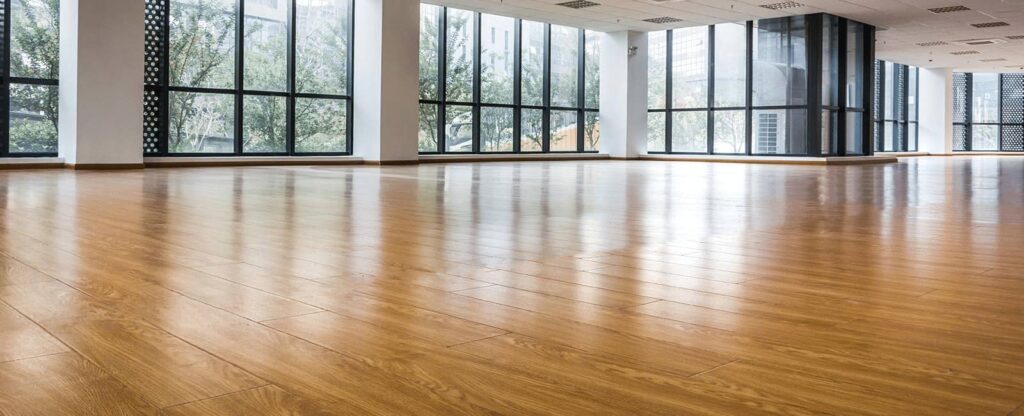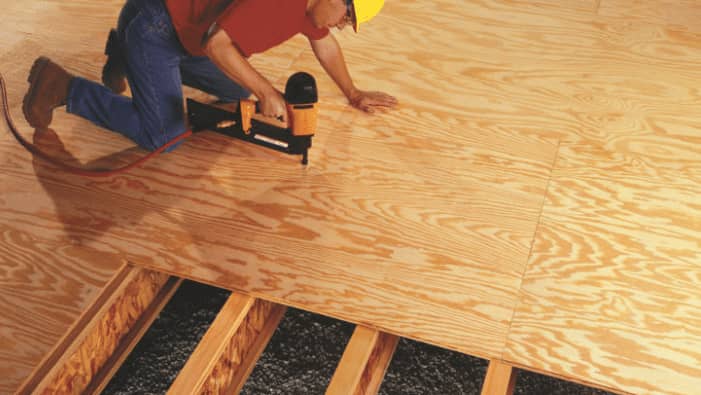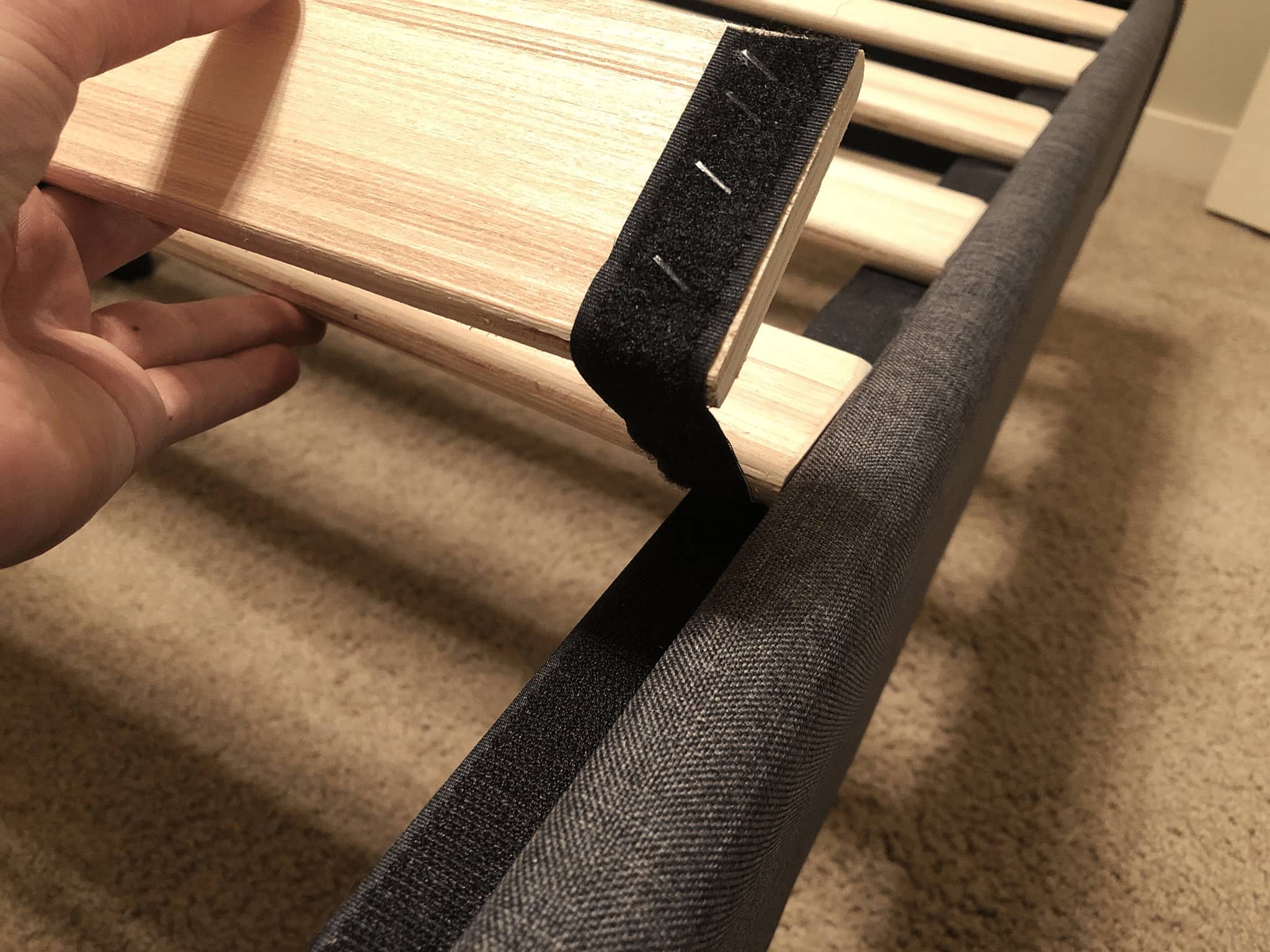Introduction: Stepping onto Strength and Versatility
In the intricate world of construction and renovation, where durability, versatility, and cost-effectiveness reign supreme, flooring plywood emerges as a champion, a steadfast material celebrated for its resilience, stability, and ability to withstand the relentless demands of everyday life. Whether you’re a seasoned contractor orchestrating the rise of a skyscraper or a DIY enthusiast breathing new life into your beloved home, a comprehensive understanding of flooring plywood is paramount.
This comprehensive guide embarks on a journey into the heart of flooring plywood, equipping you with the knowledge to navigate its intricacies, make informed decisions, select the perfect materials for your projects, and build with unwavering confidence. We’ll delve into its composition, unveil the hidden strengths within its layered structure, explore the diverse landscape of types and grades, and uncover the secrets to its proper installation and maintenance. Prepare to step onto a foundation of knowledge, where strength and versatility converge.

What is Flooring Plywood? Unveiling the Layers of Strength
Flooring plywood, a cornerstone of the construction industry and a trusted ally in countless building endeavors, is an engineered wood panel meticulously crafted through a process of layering thin sheets of wood veneer, known as plies, in alternating directions. These plies are then bonded together under a powerful combination of heat and pressure using robust adhesives, resulting in a panel that surpasses solid wood in both strength and dimensional stability. This cross-graining technique, a defining characteristic of plywood and the secret to its remarkable performance, effectively neutralizes the natural tendency of wood to expand and contract with fluctuations in humidity, producing a material that steadfastly resists warping, twisting, and buckling. This inherent stability makes flooring plywood an exceptional choice for subflooring, providing a robust and reliable base for a wide variety of flooring finishes, from the timeless elegance of hardwood and the modern appeal of laminate to the enduring durability of tile and the comforting softness of carpet.
How Flooring Plywood Works: The Science of Cross-Graining
The remarkable strength and unwavering stability of flooring plywood can be attributed to the ingenious principle of cross-graining, a testament to the power of engineered design. Each layer of veneer, meticulously positioned, is laid perpendicular to the layer beneath it, effectively counteracting the natural tendency of wood fibers to expand and contract in response to changes in moisture and temperature. This strategic arrangement creates a system of balanced forces, where the expansion of one layer is met with the resistance of the adjacent layer, whose grain runs in the opposite direction. The result is a panel that exhibits exceptional dimensional stability, remaining steadfast even when subjected to challenging environmental conditions. This inherent stability makes flooring plywood an indispensable subflooring material, providing a solid and dependable foundation for a wide array of flooring finishes, ensuring a level and durable base for years to come.
Types and Grades of Flooring Plywood: Navigating the Spectrum of Quality
The world of flooring plywood is not a monolithic landscape; it encompasses a diverse spectrum of types and grades, each meticulously engineered to meet specific performance requirements and application demands. Understanding these distinctions is paramount for selecting the ideal plywood for your project, ensuring optimal performance and longevity:
Types of Flooring Plywood:
- Sanded Plywood: Sanded plywood, as its name suggests, undergoes an additional sanding process to achieve a smooth, refined surface, making it the preferred choice for applications where aesthetics are paramount. It’s commonly used as a subfloor under hardwood flooring, laminate, and vinyl, providing a pristine and level surface for installation, ensuring a flawless finish that enhances the beauty of the final flooring.
- Sheathing Plywood: Engineered for its structural prowess and unwavering durability, sheathing plywood serves as the backbone of walls and roofs, providing essential structural support and a secure nailing surface for siding, roofing materials, and other exterior finishes. Its robust construction withstands the relentless forces of nature, ensuring the longevity and structural integrity of the building envelope.
- Underlayment Plywood: Underlayment plywood, as its name implies, serves as a crucial intermediary layer between the subfloor and the finished flooring material. Typically thinner than other types, it features a smooth, moisture-resistant surface, providing a stable and level base for laminate flooring, vinyl flooring, and tile, enhancing their performance, longevity, and overall aesthetic appeal.
Grades of Flooring Plywood:
Flooring plywood is rigorously graded based on the quality and appearance of its face and back veneers, ranging from A-grade, representing the pinnacle of quality, to D-grade, suitable for less demanding applications where appearance is not a primary concern. The most prevalent grades for flooring applications include:
- CDX Plywood: CDX plywood, a workhorse of the construction industry, strikes a balance between affordability and functionality. It features a C-grade face veneer, a D-grade back veneer, and is typically relegated to structural applications where appearance is not a primary concern, such as subflooring, wall sheathing, and roof sheathing, providing reliable performance at an economical price point.
- BC Plywood: BC plywood offers a step up in quality and refinement, featuring a B-grade face veneer and a C-grade back veneer. It’s a suitable choice for applications where one side will be visible, such as underlayment for tile and vinyl flooring, providing a smooth and stable base while remaining budget-friendly.
- AC Plywood: AC plywood, prized for its smooth, sanded surface and aesthetic appeal, features an A-grade face veneer and a C-grade back veneer. It’s commonly employed as a subfloor under hardwood flooring and laminate, providing a pristine and level surface for installation, enhancing the beauty and longevity of the finished floor.
Working with Flooring Plywood: From Cutting to Installation
Cutting and Shaping:
Flooring plywood, despite its inherent strength, readily yields to the skilled hands of a craftsman, easily cut and shaped using standard woodworking tools, including circular saws, jigsaws, and table saws. When cutting plywood, it’s imperative to use sharp blades and support the panel adequately to prevent chipping and splintering, ensuring clean, precise cuts that contribute to a professional-looking finished product.
Installation:
The longevity and performance of your flooring plywood subfloor hinge on proper installation, a critical step that should not be overlooked. Here are the key steps to ensure a successful and enduring installation:
- Prepare the Subfloor: Begin by ensuring the existing subfloor is level, dry, and free of debris. Address any moisture issues before installing the plywood to prevent future problems, such as mold growth or warping.
- Install a Moisture Barrier: Lay down a moisture barrier, such as roofing felt or polyethylene sheeting, over the prepared subfloor. This crucial step prevents moisture from migrating from the subfloor into the plywood, safeguarding it from damage and ensuring its long-term performance.
- Position and Secure the Plywood: Install the plywood sheets perpendicular to the joists, staggering the seams to enhance structural integrity and prevent weak points. Use construction adhesive and ring-shank nails or screws to securely fasten the plywood to the joists, ensuring a robust and long-lasting subfloor that can withstand the demands of everyday use.
- Sand the Seams: Once the plywood is securely in place, sand the seams smooth to create a level and uniform surface for the flooring finish. This meticulous step ensures a flawless installation and prevents any irregularities from telegraphing through the finished floor, compromising its aesthetic appeal.
Applications of Flooring Plywood: A Foundation for Diverse Needs
Flooring plywood’s versatility extends far beyond its role as a subfloor, finding applications in a myriad of construction, renovation, and DIY projects. Its strength, stability, ease of use, and wide availability make it a favorite among:
Target Audiences:
- Contractors: From large-scale commercial projects to smaller residential renovations, contractors rely on flooring plywood’s structural integrity and versatility for a wide range of applications, including subfloors, wall sheathing, roof decking, and concrete formwork. Its ease of installation and consistent performance make it a valuable asset in meeting project deadlines and exceeding client expectations.
- DIY Enthusiasts: Flooring plywood empowers homeowners and DIY enthusiasts to tackle a wide range of projects with confidence, from simple home repairs and renovations to more ambitious endeavors like building custom furniture, shelving units, and even small structures like sheds or playhouses. Its affordability, ease of use, and wide availability at local hardware stores make it an accessible and versatile material for both novice and experienced DIYers.
- Architects and Designers: Architects and designers, always seeking innovative and sustainable solutions, are increasingly drawn to flooring plywood’s unique combination of strength, versatility, and aesthetic potential. Its high strength-to-weight ratio makes it suitable for a variety of structural applications, while its ability to be molded into curved shapes opens up exciting possibilities for creating unique and eye-catching designs.
Major Applications:
- Subflooring: As its name suggests, flooring plywood’s most common application is as a subfloor, providing a stable and level base for various flooring finishes, including hardwood, laminate, tile, and carpet. Its ability to span joists and resist deflection ensures a smooth and even surface for the finished flooring, enhancing its longevity and aesthetic appeal.
- Wall Sheathing: Flooring plywood plays a crucial role in wall construction, adding structural support and a secure nailing surface for siding, drywall, and other exterior finishes. Its ability to withstand wind loads and resist racking helps to ensure the structural integrity of the building envelope, protecting it from the elements and contributing to its overall energy efficiency.
- Roof Decking: In roof construction, flooring plywood serves as a stable and durable base for roofing materials, such as asphalt shingles, metal roofing, and tile. Its ability to withstand the weight of roofing materials, as well as snow and wind loads, makes it an essential component of a long-lasting and weathertight roof.
- Concrete Formwork: Flooring plywood’s smooth, durable surface and ability to be easily cut and shaped make it an ideal material for creating temporary molds for pouring concrete, known as formwork. These molds help to shape walls, foundations, and other concrete structures with precision and ease, ensuring accurate dimensions and a smooth finish.
Advantages in Specific Applications:
- High-Traffic Areas: Flooring plywood’s exceptional strength and stability make it the ideal choice for high-traffic areas, such as hallways, living rooms, and commercial spaces, where it can withstand the constant wear and tear of foot traffic without showing signs of damage or deflection.
- Moisture-Prone Areas: When properly installed with a moisture barrier, flooring plywood can be used with confidence in moisture-prone areas, such as bathrooms and kitchens, providing a stable and durable base for flooring that resists swelling, warping, and mold growth.
- Radiant Floor Heating: Certain types of flooring plywood are specifically designed for compatibility with radiant floor heating systems, providing a stable and thermally conductive subfloor for efficient heat transfer. These specialized plywood panels are typically made with a higher density and lower thermal resistance, allowing heat to pass through easily and evenly, enhancing the efficiency and comfort of the radiant heating system.
Comparing Flooring Plywood Suppliers: Navigating the Market
Choosing the right flooring plywood supplier can be just as important as choosing the right type and grade of plywood. Here’s a comparative look at three major suppliers:
| Feature | CAIE | Supplier B (Home Depot) | Supplier C (Lowe’s) |
|---|---|---|---|
| Brand Name | CAIE | Plytanium | Oriented Strand Board (OSB) |
| Supplier | CAIE | Home Depot | Lowe’s |
| Location | International | United States | United States |
| Price Range (per sheet) | $40 – $60 | $30 – $50 | $25 – $45 |
| Specialties | High-quality, sustainably sourced plywood with a focus on performance and durability. Offers a wide range of grades and thicknesses to meet diverse project needs. | Widely available brand offering a good balance of quality and affordability. Caters to both DIYers and professional contractors. | Budget-friendly option suitable for general construction and DIY projects. Offers a variety of thicknesses and sizes to choose from. |
Table 1: A Comparative Glance at Flooring Plywood Suppliers
When choosing a supplier, consider factors such as price, quality, availability, and customer service. It’s also important to inquire about the supplier’s sourcing practices and whether they offer sustainably harvested plywood options.
Pros and Cons of Flooring Plywood: Weighing the Advantages and Limitations
Like any building material, flooring plywood has its pros and cons. Understanding these advantages and limitations will help you make informed decisions about when and where to use it:
| Advantages | Limitations |
|---|---|
| Exceptional Strength and Stability: Cross-graining, the hallmark of plywood construction, imparts remarkable strength and resistance to warping, twisting, and buckling, making it ideal for structural applications where stability and load-bearing capacity are paramount. | Susceptibility to Moisture Damage: While plywood is treated for moisture resistance, prolonged exposure to moisture can lead to swelling, delamination, and rot. Proper installation, including the use of moisture barriers and sealants, is crucial to mitigate this risk and ensure the longevity of the plywood. |
| Versatility in Applications: Flooring plywood’s versatility is unmatched, suitable for a wide range of applications, from subflooring and wall sheathing to roofing, concrete formwork, and DIY projects. Its adaptability to various uses makes it a valuable asset in both residential and commercial construction. | Potential for VOC Emissions: Some plywood adhesives may contain volatile organic compounds (VOCs), which can off-gas into the air and impact indoor air quality. Choosing low-VOC or no-VOC plywood is recommended to minimize this risk and maintain a healthy indoor environment. |
| Cost-Effectiveness: Generally more affordable than solid wood, especially in larger quantities, flooring plywood offers a cost-effective solution for a variety of construction needs without compromising on performance or durability. | Limited Aesthetic Appeal: While plywood can be sanded and finished, it doesn’t possess the natural beauty and unique grain patterns of solid wood. In applications where aesthetics are paramount, solid wood may be a more suitable choice. |
| Availability in Large Sheets: Available in large sheet sizes, flooring plywood can speed up installation and reduce the number of seams, enhancing structural integrity and minimizing labor costs. | Requires Proper Handling and Installation: Improper handling, cutting, or installation can compromise the structural integrity and longevity of plywood. It’s essential to follow manufacturer’s instructions and best practices to ensure optimal performance. |
Table 2: Balancing the Scales: Pros and Cons of Flooring Plywood
Related Insights: Exploring the Broader World of Plywood
Flooring plywood represents just one facet of the vast and versatile world of plywood. Its applications extend far beyond the realm of flooring, finding use in furniture making, boatbuilding, concrete formwork, packaging, and countless other industries. Its ability to be molded into curved shapes, combined with its inherent strength and affordability, makes it a favorite among architects, designers, and builders seeking innovative and sustainable solutions.
The future of plywood is bright, driven by advancements in adhesive technology, sustainable forestry practices, and the development of new and improved plywood products with enhanced performance characteristics and reduced environmental impact. As the construction industry embraces sustainability and seeks to reduce its environmental footprint, plywood, with its renewable nature and efficient manufacturing processes, is poised to play an even more prominent role in building a more sustainable future.
FAQs: Addressing Your Flooring Plywood Queries
1. What is the difference between OSB and plywood, and which is better for flooring?
- OSB (Oriented Strand Board) and plywood are both engineered wood panels used in construction, but they differ in their construction and properties. OSB is made from wood strands glued together in layers, while plywood uses thin sheets of wood veneer. Plywood is generally considered stronger and more moisture-resistant than OSB, making it a better choice for flooring applications, especially in areas prone to moisture, such as bathrooms and kitchens.
2. How thick should flooring plywood be?
- The recommended thickness of flooring plywood depends on the joist spacing and the intended load-bearing requirements. For most residential applications with joists spaced 16 inches apart, a thickness of 5/8 inch or 3/4 inch is common. For heavier loads or wider joist spacing, thicker plywood may be required. Consult local building codes and a structural engineer for specific recommendations.
3. Can I install flooring plywood over concrete?
- Yes, flooring plywood can be installed over concrete, but it’s crucial to address moisture concerns first. Concrete can release moisture over time, which can damage the plywood. Install a moisture barrier, such as 6-mil polyethylene sheeting, over the concrete before installing the plywood. Use construction adhesive and concrete screws to secure the plywood to the concrete.
4. How do I protect flooring plywood from moisture?
- Protecting flooring plywood from moisture is essential for its longevity. Start by addressing any moisture issues in the subfloor. Install a moisture barrier over the subfloor before installing the plywood. Use a construction adhesive that is water-resistant, and seal the edges of the plywood with a sealant to prevent moisture intrusion.
5. What type of plywood is best for underfloor heating?
- When installing underfloor heating, it’s essential to choose a plywood that is compatible with the heating system and provides good thermal conductivity. Plywood with a high density and low thermal resistance is ideal. Consult the underfloor heating system manufacturer for specific plywood recommendations.
Conclusion: Building on a Solid Foundation of Knowledge
As you embark on your next construction or renovation project, remember that a solid foundation is paramount. Flooring plywood, with its exceptional strength, stability, and versatility, stands as a reliable partner in building enduring structures. By understanding its nuances, choosing the right materials for your needs, and employing proper installation techniques, you can create a foundation that will stand the test of time, providing a solid base for your dreams to take shape.
Related Blogs
Flooring Plywood Manufacturers: Discover the Key to Perfect Stability




